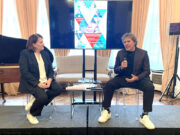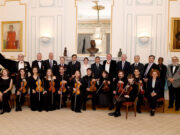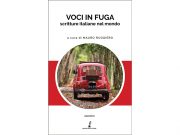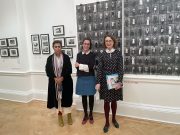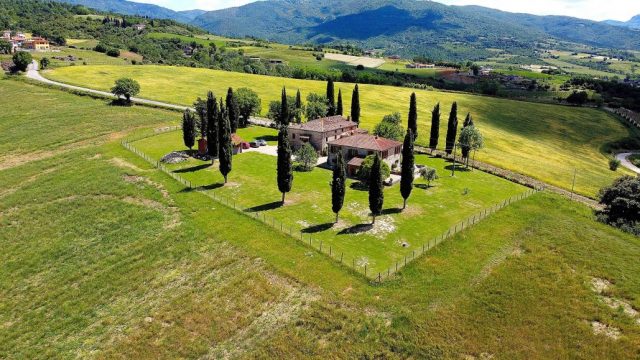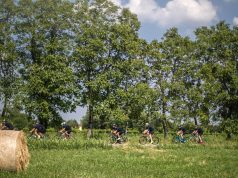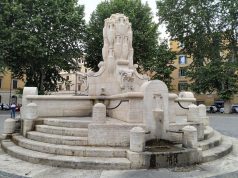Tuscany is all about delicate simplicity. Characterised by the immense waves of endless pea green vineyards, rows of fragrant cypress trees so tall that you feel they touch the sky, golden wheat fields, craggy medieval hilltop villages and a superb cucina povera- the cooking of the poor – Tuscany is all about rolling up your sleeves and enjoying the simple earthly pleasures in life.
Yes, this central part of Italy is by no means somewhere new, but as travel destinations come in and out of fashion, enjoying the constant ebb and flow of cultural phenomena, Tuscany remains absolute. It is a timeless destination, a travel utopia that seems to never go out of style.
To best appreciate Tuscany, you have to get back down to basics and one of the ways to do this is by staying in agriturismi– farm stays- which are rapidly gaining momentum among those who want to travel authentically. Dubbed as homestays, agriturismi provide guests with imitate, unpretentious and more importantly affordable dwellings, often paired with sprawling pastoral views.
For our time here, we had the immense pleasure of staying at Podere Bocci, a nearly 500-year-old Tuscan estate which we (rather delightfully) called home for the next few days and where, Italian literary writer and journalist Emma Perodi, chose as a countless setting for her stories. Approaching Podere Bocci feels like you are stumbling upon a traditional sanctuary. Planted in the middle of a wide-open dramatic landscape where you can enjoy the undulating rolling hills, Podere Bocci is deep in the countryside, secluded (in the best possible way) and offers you the possibility of channelling the character and charm of old Tuscany.
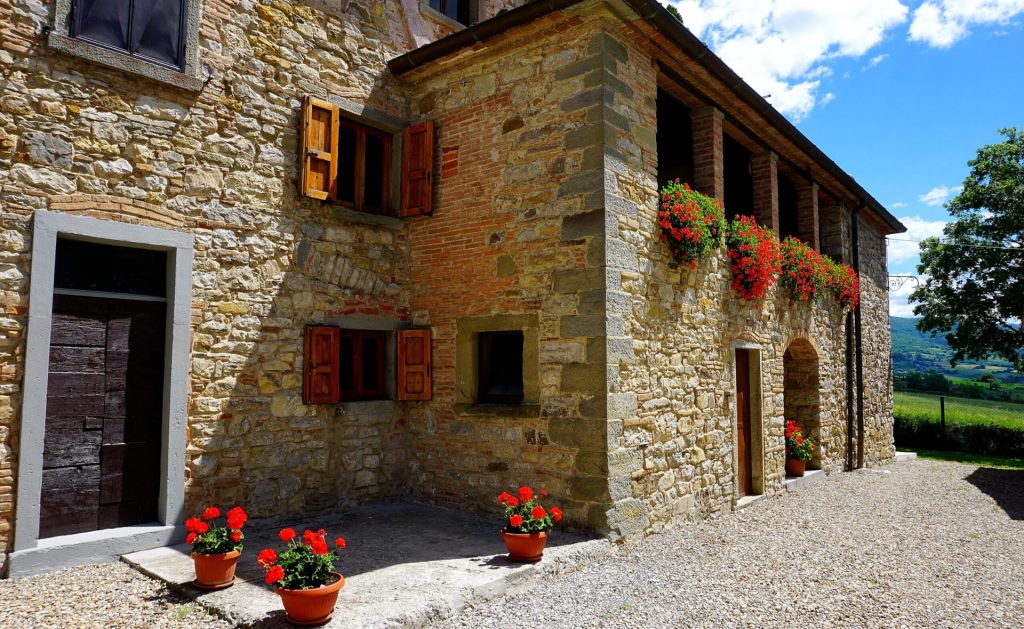
Designed with a traditional palette, the rooms are rustic and charming with big lofty ceilings, bare brick walls and good-sized bathrooms. There are two apartments each sleeping six people, and both can be rented separately or in exclusive use, taking it entirely as a villa. It is a self-catered property so there’s ample kitchen space in both apartments for you tuck in with friends and family and enjoy the collective experience of cooking together. But the real joy of this place is lounging outside, where you can embrace the remote and peaceful open space during the spring and summer months and enjoy long lazy lunches or supper with great company.
About a 30-minute drive from Arezzo, Podere Bocci is located in Poppi and you absolutely must have a car with you. Although one of the great things about this property is that in less than two hours you can reach the Tuscan classics like Florence and Siena, or for somewhere further afield Assisi or Spoleto in Umbria. But these places harbour too familiar a cultural reference point and we are interested in exploring the lesser known but equally enchanting nearby places. Tuscany gets extremely hot during the summer months, so we suggest planning your activities early or in the late afternoon when the sun isn’t so oppressive. Enjoy your middays by dipping in the pool and or reading a book under the shaded area.
Places to explore nearby:
Poppi:
The town of Poppi is about a 10-minute drive and great for an afternoon walk. The skyline is dominated by the overbearing Castello dei Conti Guidi which we come to learn housed the supreme poet Dante when exiled from Florence. It is said that he composed canto XXXIII of Inferno within these very walls.
Stia:
Then there’s the delightful nearby village of Stia, a 15- minute drive away and is surrounding by the perfect scenery for those who love nature, mountains and hiking. You can find countless churches and a nearby convent La Verna which Francesco d’Assisi became a custodian.
Parco Nazionale delle Foreste Casentinesi, Monte Falterona e Campigna.
Stretching between Tuscany and Emilia-Romagna, the park is one of Europe’s densely forested areas grazed with wild animals (you might get a glimpse of a deer) and a soul stirring oasis of green.
The monastery of Camaldoli
The Monastery of Camaldoli is in the heart of a secular forest, in one of the wild and impenetrable areas of the central Appennine ridge. It was built there in 1024, on the Tosco-romagnolo Apennines near Arezzo, by San Romualdo, a monk and Benedictine abbot, who made it the hub and center of the Camaldoli Congregation. The monastery now houses seven mangificnet panel paintings by Giorgio Vasari.
A day trip to Arezzo:
Older than Egypt’s Alexandria, Arezzo was once a vibrant Etruscan trading post who grew the city to be an independent republic from as early as the 10th century. In support of the Ghibelline cause in the violent battles between pope and emperor, Arezzo was eventually subjugated by Florence in 1384. Nowadays, while Florence’s economy has become over-reliant on tourist traffic, Arezzo has been going on its own path and in recent years has been taken more seriously as a place to visit in Tuscany.
Adorned with impressive churches, museums, a monthly antique fair (the biggest in Italy) and a central piazza that appeared in Roberto Benigni’s classic film La Vita è Bella (Life is Beautiful), Arezzo is a fabulous Tuscan affair. Watch the locals spill along the length of shop-clad Corso Italia for the ritual late-afternoon passeggiata (stroll) whilst sipping on your aperitivo.
What to see in Arezzo:
Basilica of San Francesco
Piero della Francesca’s frescoes, considered one of the most treasured Renaissance artworks in Italy, can be found at this very cathedral.
Dedicated to St. Francis of Assisi, this Gothic-style Basilica is considered to be the main focal point of Arezzo especially because it houses the fresco cycle Legends of the True Cross. The painting of the chancel began with a commission by the Aretine family Bicci, who called the painter Bicci di Lorenzo to paint the large cross-vault. In 1452, at Bicci’s death, only the four Evangelists had been painted in the vault, as well as the triumphal arch with the Last Judgement and two Doctors of the Church. Piero della Francesca was called in to complete the magnificent series of interior frescoes depicting Cupid, St. Louis, St. Peter, St. Augustine, St. Ambrose and St Mary Magdalene which are still in near-perfect order.
Museo di Casa Vasari
Built and sumptuously decorated by Arezzo-born painter, architect, and art historian Giorgio Vasari (1511–74), this museum is where Vasari lived and worked, and where the original manuscript of his Lives of the Most Excellent Painters, Sculptors and Architects (1550) – still in print under the title The Lives of the Artists – is kept
The Antiques Fair
Held the first Sunday of the month and then every subsequent Saturday, the Arezzo Antiques Fair draws dealers from across Italy and takes over the Piazza San Francesco, Piazza Grande, and Logge Vasari. Launched in 1968 by Tuscan collector Ivan Bruschi, it’s far more than just a flea market: There are 500 exhibitors selling furniture, paintings, books, historic prints, modern antiques, toys, watches, porcelain, glass, fabrics, iron and copper objects, as well as unexpected treasures that defy categorization. Don’t leave without a beautifully bound book.
Don’t miss:
Saracen Joust
The Saracen Joust is a tournament that takes place in June and September in which locals wearing colourful costumes, horses accompanied by the town’s ancient banners and the sound of trumpets create a festive medieval atmosphere.
Date: Sunday, 5 September 2021.
Podere Bocci is open from January – October and in 2022 will be open all year round. Prices start from €180 a night with a minimum stay of five nights. Maximum number of guests is 12 for the villa in exclusive use.
Poderebocci.it


